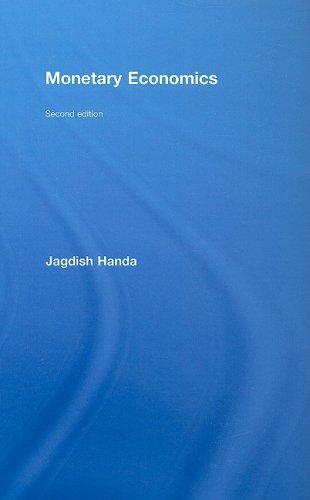Why does the WMM theorem hold in the analysis of Chapter 22 but not in the analysis
Question:
Why does the W–M–M theorem hold in the analysis of Chapter 22 but not in the analysis presented in this chapter? What is the critical difference in the assumptions that changed this finding and what is your own assessment of their plausibility?
Does the W–M–M theorem hold or not hold in modern developed economies? Does it do so in the LDCs with poorly developed financial markets? Discuss.
Fantastic news! We've Found the answer you've been seeking!
Step by Step Answer:
Related Book For 

Question Posted:






